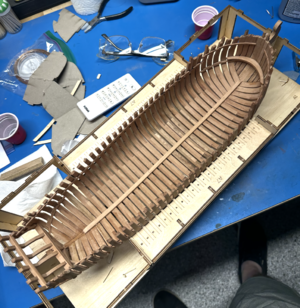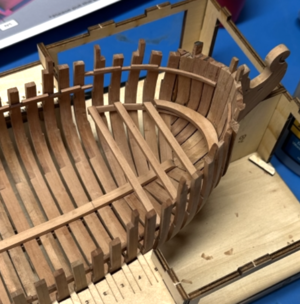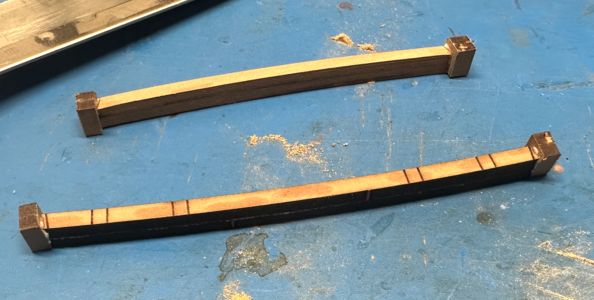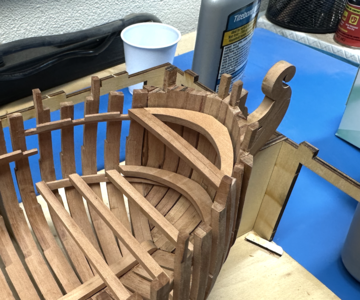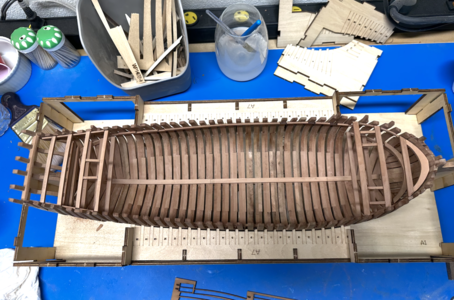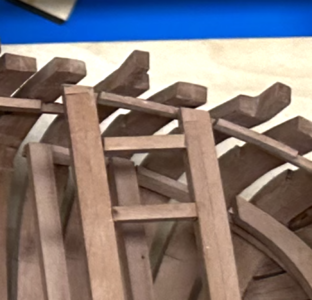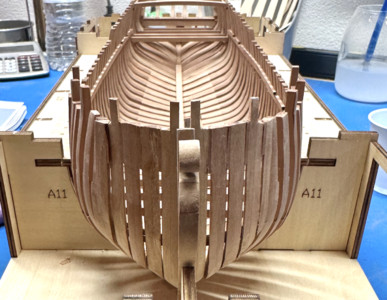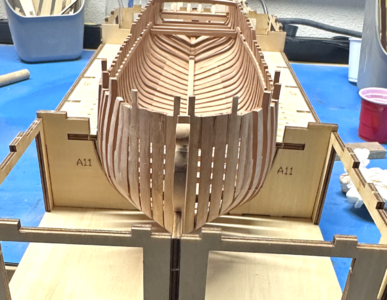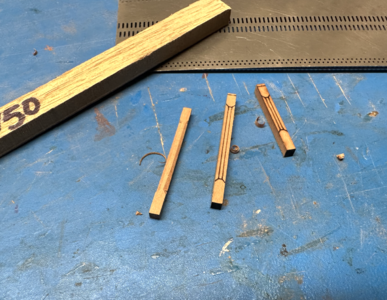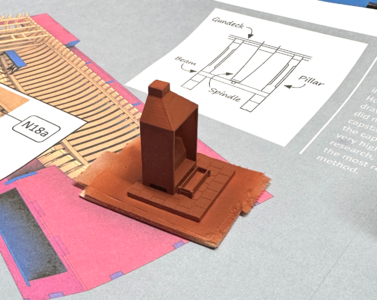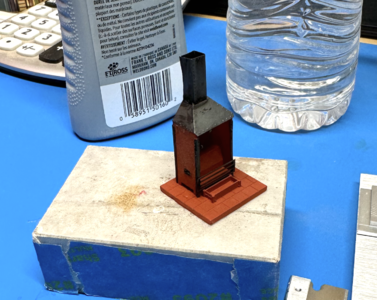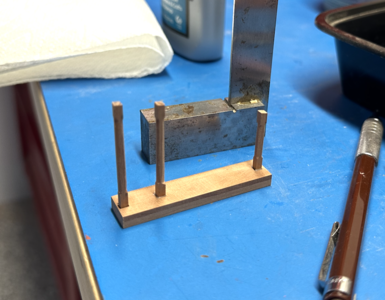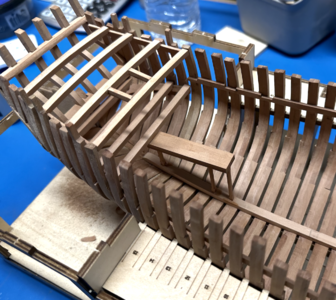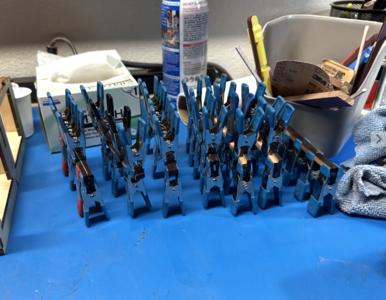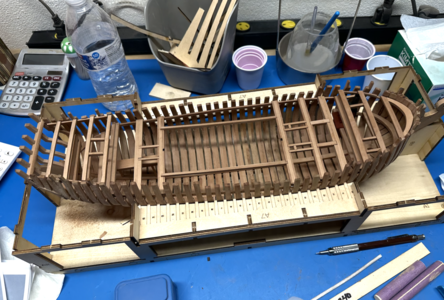Sorry I didn't see the comment from RDN1954 earlier. I think I saw the picture and assumed it was my postI do think RDN1954 has got the point. It looks like almost each frame mismatches the berth. It's quite strange as my very same operation went remarkably smooth (but one of the first single frame - the n. 3 - I put together, resulted a little bit scarce in width) despite I simply trusted the scantling profiles, even ignoring the draw... . Rubberbands are the prompt and most suitable solution, anyway. Cheers
The look of those frames is a little deceiving and it drove me nuts for a while. For some reason, despite great care, a few frames didn't sit back in the slots on the jig all the way. They are aligned, but didn't make it all the way out. I remade a couple of the midship frames just for this reason, but it didn't get any better. I think it's just the frame design. You can easily push both sides of the frames out a little bit to line up.It was a delicate game with a paper wedge or two to get them to improve alignment without filling the jig. . I just got done installing the clamps. All it took was a little gentle pressure to get them to line up and dry attached to the frame, the clamp, and each other in good order.
I beveled all these pieces completely before installation, largely because the instructions told me not to shape the frames fully assembled (although later it said you could do some sanding on the inside?). I think the ideal situation would have been to have unbeveled frames. mount them on the keel together, and shape in place. For this model, beveling and the occasional nudging and gluing will have to do.
I don't know if I'm ready for it, but a regular building board seems like a more satisfying way to do things. With a jig, the frames need to be beveled (at least on the outside) in advance to putting them on the keel before they are fixed. Also, I wasn't super happy about the vertical alignment of all the frames. Maybe it was an optional illusion, but they didn't seem perfect. Finally, the marked bevels on the frame aren't super accurate, especially when it comes to the heel of the half frames. One day I hope to have the knowledge and hands for that sort of thing.


